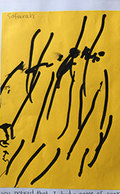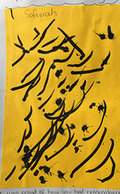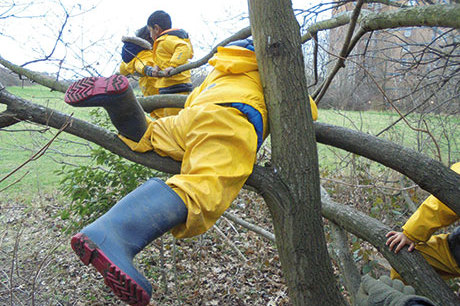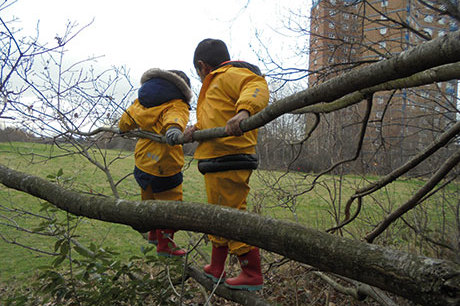
The very mention of maths can be an immediate cause of anxiety or even terror for many practitioners in the early years and primary schools. Comments such as ‘My brain is not wired up for maths’, ‘I have never liked maths’ and ‘We don’t really need to know about maths now we have calculators on our phones’ trip off the tongue.
Such categoric statements, however, are not so frequently made about English or the arts. So, what is going on here?
As with many anxieties, this one is often rooted in past encounters. Many practitioners recall negative and demoralising memories of being ‘taught’ maths. Worksheets to be done (or not) in silence, irrelevant calculations to be solved, just not ‘getting it’ and a dread of not finding the ‘right answers’ are among the problems remembered.
Fliss James, early years teacher and maths consultant, thinks that as well as these dispiriting experiences, at the heart of such perceptions and attitudes is the fundamental problem of having too narrow a concept of what maths is. She is convinced that, ‘We have to rethink what maths actually is and what it means for young children – this is the only way we can try to prevent these poor experiences from being repeated.’
REFLECTING ON PRACTICE
Ms James is working on a one-year project at Sheringham Nursery School in Newham, east London to develop more effective teaching of early maths through play.
The project collaborators are East London Early Years and Schools Partnership, SMAR+ (Specialists in Mathematical Reasoning and Thinking) and the Maths Hub at Elmhurst Primary School in east London. Observing and reflecting on day-to-day practice underpins the current work at Sheringham.
One of the most fascinating and repeated observations during Ms James’s work (in various settings) has been practitioners’ reactions to children subitising.
Subitising is a term coined by Piaget that defines the child’s ability to recognise instantly the number of objects presented without having to count them one by one.
Subitising
When young children subitise, it is common for practitioners to say, ‘Now count them just to check.’ While this may seem quite an ordinary and harmless example of everyday practice, why is it that the adult feels compelled to ask the child to check?
The same compulsion ‘to check’ does not arise so readily when a child reads a word instantaneously. It is certainly thought-provoking. It is likely that it relates to a deeply rooted notion of what counting really is.
Counting reliably
Similarly, a child may be praised for counting fluently to three when presented with three objects or shown three butterflies on a picture card, and the practitioner may assess the child as being able to count reliably to three. Yet asked to go and fetch three cups, that same child may have no idea what to do.
Ms James comments, ‘We need to ask what it is, for instance, for a child to really know about number three – what, for them, is the threeness of three?’
Tuning into a child’s understanding of basic number work is often not as straightforward as might be thought.
CASE STUDY: Engaging with number and counting
 The yellow pictures (right and below) occurred when a child and teacher were playing Snakes and Ladders. As they were counting, the teacher asked the child if she would like to make marks to represent her counting. Initially, she made a line for each number, but then decided to make a spot for each number she counted, being very careful to ensure 1:1 correspondence – one spot or one line for each number.
The yellow pictures (right and below) occurred when a child and teacher were playing Snakes and Ladders. As they were counting, the teacher asked the child if she would like to make marks to represent her counting. Initially, she made a line for each number, but then decided to make a spot for each number she counted, being very careful to ensure 1:1 correspondence – one spot or one line for each number.
Later, she wanted to write numbers. She knew how to write 0 and 1 and did this independently, but wasn’t able to write the bigger numbers that she wanted.
The teacher encouraged her to find her own way of doing this, so she marked a line for each unit within a number (for example, III for 3) all the way to 11. This required a lot of concentration over a long period of time. When she checked her marks (without being asked to), she counted accurately.
 Child: ‘I was writing numbers. I don’t know how to write number 2.’
Child: ‘I was writing numbers. I don’t know how to write number 2.’
Teacher: ‘How do you represent number 2?’
Child: ‘I did some lines.’
Here we have an example of a child absorbed in number and clearly demonstrating something of his conceptualisation, including how to record it. It would have been so ‘easy’, even common practice, for the practitioner to show how to write a number 2 and then ‘he would know.’
RECONCEPTUALISING MATHS
Though number and counting are central to maths in the early years, this is just one aspect of maths. The bigger question of ‘What is maths?’ is one for which there is no single answer. There is, however, one essential criterion that should be integral to all conceptions of the subject: the early teaching of maths must connect with real life. It is not a discrete subject detached from day-to-day living.
Keith Devlin, in The Maths Gene(2001), clarifies this, ‘Mathematics is not about number, but about life. It is about ideas. And far from being dull and sterile as it is so often portrayed it is full of creativity.’
This is precisely the premise that Ms James is working from in the training she is doing at Sheringham: training staff to be able to see maths, spot what it is, where it is, how children can come to it and engage with it. ‘It doesn’t take long for maths to become a more dynamic theme – staff are often amazed to think of climbing a tree or riding a bike as being rich mathematical activities,’ she says.
Real maths

Climbing a tree can be used to explore maths concepts
 Forest School is an ideal context for approaching maths in a natural, meaningful and playful way. Climbing a tree, for instance, involves:
Forest School is an ideal context for approaching maths in a natural, meaningful and playful way. Climbing a tree, for instance, involves:
Spatial awareness How does it feel to be up in the air?
Positional language Can you step on the low branch to reach the high one?
Problem solving Do you think you can you reach that next branch safely?
Counting How many branches have you climbed? How many are there left?
Shape What shapes can you see in the tree?
Pattern Can you see any patterns in the branches?
Ms James’s emphasis is on developing mathematical conversations with children and staff: a mathematical vocabulary and way of speaking will then, over time, become more ordinary throughout the day.
CONCLUSION
The All-Party Parliamentary Group for Maths and Numeracy would like to see moves towards a better trained and qualified workforce with a clear understanding of early years maths. Once staff feel comfortable and confident about their own mathematical knowledge and expertise – an ongoing process that will not happen overnight – it is more likely that maths will run as a thread throughout the nursery day, in the way language does.
For instance, reading The Tiger Who Came to Tea by Judith Kerr – as well as being read in itself as a piece of rich children’s literature – might also be used to include a maths conversation, ‘I wonder how much water the tiger drank to empty the taps?’ ‘How many keys can we see the milkman holding?’ ‘How heavy is the shopping that they bought?’ Many of these are questions with no answers – what could be more ideal for mathematical curiosity and development?
MORE INFORMATION
‘All about…spatial reasoning’ and ‘All about…embodied learning’ by Dr Jennifer Thom of the University of Victoria, Canada and ‘Get in line’ by Meredith Jones Russell all explain the importance and growing evidence for an experiential approach and a broader curriculum to be adopted for maths teaching in the early years. Go to www.nurseryworld.co.uk









